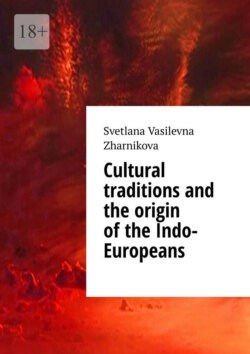Читать книгу Cultural traditions and the origin of the Indo-Europeans - - Страница 4
On the possible location of the holy Hara and Meru Mountains in Indo-Iranian (Aryan) mythology. 1986
ОглавлениеThe location of the legendary Hara and Meru, the holy northern mountains of the Indo-lranian (Aryan) epos and myths is one of the many riddles in Eurasian ancient history that has been troubling researchers for over a century and prompting ever more, sometimes totally contradictory, hypotheses. As a rule, they are believed to be the Scythian Ripei or Hyperborei mountains mentioned by the authors of antiquity. Over 80 years ago The Arctic Home in the Vedas, by the outstanding Indian political figure, Bal Gangadhar Tilak, launched a series of publications related to this subject in one way or another and continued to this day.
The answer has never been found, as obvious from the two most recent publications – a book by G. Bongard-Levin and E. Grantovsky From Scythia to India (1983), The Ethnogeography of Scythia by I. Kuklina (1985). The two socalled Ripei Mountains locations, which the books propose, are mutually exclusive, though the authors proceed from the same ancient myths, historical sources and data.
Bongard-Levin and Grantovsky, analyzed the Avesta, Rigveda, Mahabharata,
the works of Herodotus, Pomponius Mela, Plinius, Ptolemaeos, and the information provided by medieval Arabian travelers, ibn-Faldan, ibn-Batuta, and concluded that the geographical characteristics, repeated without exception in every source, are factual a/id indicate that the Ripei Mountains, Hara and Meru were the Urals, since only they possess nearly all the specific features attributed to the holy northern mountains: high altitude, natural resources, proximity to northern seas, etc.
Kuklina, the author of The Ethnogeography of Scythia, disagrees entirely, and argues that “it is apparently necessary to first distinguish the concept of the mythical northern mountains from that of mountains north of Scythia where many
rivers began. Both of them were named Ripei. However there is no doubt that only the latter mountains can be localized, whereas the former, connected with the far north and Hyperborei, should be sought for in the myths of Indo-lranian peoples”.
Kuklina backs up her conclusions with a large number of comments by ancient authors – Pseudo Hippocrates, Dionisius, Eustaphius, Vergilius, Plinius, Herodotus, etc. – about the northern mountains called Ripei. She then cites, from Bongard-Levin and Grantovsky, examples of amazing similarities between Scythian polar concepts and ancient Indian and ancient Iranian “Arctic” tradition.
